| |
Hammered aluminum giftware products were, at once, both "old" and "new." The "made by hand" aspect of these products held an aesthetic appeal for many people in an era of growing uniformity and factory production, while their aluminum material made them seem decidedly "modern."
About 1935, Schnitzer brought in Jack Orenstein as National Sales Manager. Orenstein, skilled in merchandising techniques and in building relationships with clients, was already successful in the giftware industry by the time he joined Everlast. Orenstein organized a highly effective sales force and gave Everlast a national presence in the decorative aluminum giftware market.

Gravy boat, 1938-1950
ID.2005.121.183
Gift of Constance & James Levi |
FORGED GIFTWARE
Everlast's first product line, "Forged Giftware,"
was introduced in 1933, and continued until the company closed. Featuring Colonial Revival- and Neoclassical Revival-inspired designs, this line appealed to customers with traditional tastes. |
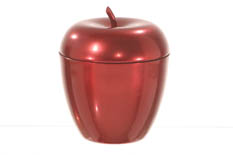
Ice bucket, 1939-1955
ID.2005.121.160 Gift of Constance & James Levi |
NEOCRAFT
In 1938, the company aimed its new "Neocraft" product line at customers with more modern tastes. Made of anodized aluminum (a protective coating created by chemical or electrolytic means), this giftware featured vibrant colors, clean lines and intaglio motifs. |

Fallen Leaves relish tray, 1940-1941
ID.2005.121.212 Gift of Constance & James Levi |
AMERICAN WAY
For a short time in the early 1940s, Everlast collaborated with industrial designer Russel Wright in his "American Way" initiative, "to inspire American design and to incorporate, coordinate and accelerate the art-in-industry movement in home furnishings." Wright's wife Mary designed the "Fallen Leaves" pattern of this product line. |
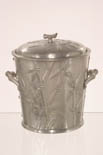
Bali Bamboo ice bucket, 1953-1959
ID.2005.121.129 Gift of Constance & James Levi |
BALI BAMBOO
Everlast's most successful line, "Bali Bamboo," was a direct result of America's fascination with the South Pacific after World War II. More than 60 different items, produced between 1946 and 1959, featured raised bamboo shoots and a satin finish. Together, these features provided the added advantage of hiding scratches. |
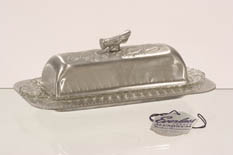
Butter dish, 1953-1958
ID.2005.121.235 Gift of Constance & James Levi |
HOSTESS GIFTS FOR "GRACIOUS SERVING"
From 1946 into the 1950s, Everlast produced its "Promotion Parade"—every month highlighting a new "smartly styled" hostess accessory. Groups of these promotional items, on sale for a limited time, were sold as a unit and advertised at a special price. |
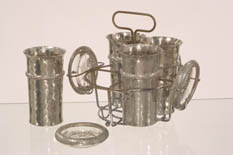
Tumbler and coaster set, about 1952
ID.2005.121.206 Gift of Constance & James Levi |
SILVERCREST
In 1952, Everlast introduced a line called "Silvercrest," featuring a highly polished aluminum finish. By this time, as a cost-cutting measure, the products' "hand forged" hammer marks were actually produced by machine. |
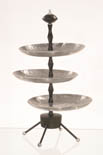
Tidbit tray, about 1953
ID.2005.121.174 Gift of Constance & James Levi |
EVERLAST MODERN
In 1953, in an attempt to reinvent its products amidst the growing popularity of plastics, Everlast introduced a contemporary line called "Everlast Modern." But little could be done to save the company. After nearly 30 years, the business closed in 1961. |
| |
-- Donna Braden, Curator of Public Life
-- Kira Macyda, Benson Ford Research Center |
|

